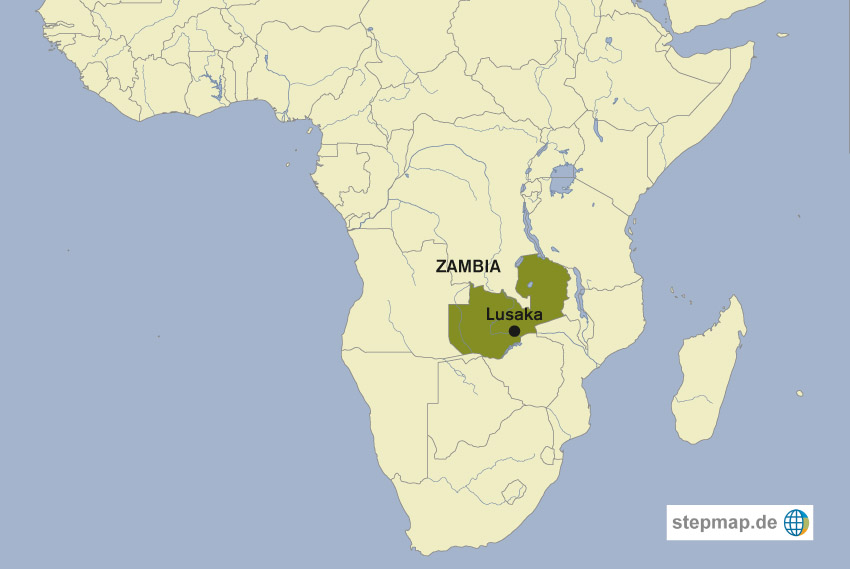Youth unemployment
South Africa’s time bomb

The Arab Spring showed clearly what can happen when masses of young people suffer political and economic distress. It also taught us that the future is unpredictable. If South Africa’s government wants to keep the time bomb of the many desperate, unemployed and barely educated young people from exploding, it must implement structural reforms in the labour market.
Forty-eight percent of the age group under 34 have no job. The subgroup worst affected are the 18- to 24-year-olds who are entering the labour market. Three-quarters of unemployed young people have never had a job. Women are particularly often out of work (their jobless rate is 59 %). For both sexes, the situation is particularly bad in rural areas. Black South Africans are more likely to be unemployed than any other ethnic group. Education is an important factor for success in the labour market: a university degree raises the chances of finding a job to 95 %.
Though the situation looks bleak for the average young person, it is not immutable. The following five proposals could be implemented in South Africa without the government having to change the political system, administrative structures or its political goals.
Promote economic activity in selected places and sectors
Stimulating economic growth at local levels has helped many regions around the world to progress. Pudong, which is part of Shanghai, was transformed from an agricultural area into a modern business hub with some of the world’s tallest skyscrapers in the past 20 years. Such vertiginous growth was driven by two factors: policymakers’ focus on one place and the focus on a specific economic sector, fostering the growth of an investment environment that includes suppliers and logistics as well as training and education opportunities.
Most of South Africa’s special economic zones are not or not sufficiently focused on specific industries. Furthermore, they are not always located in medium-sized, high-potential cities. They tend to be in places with no infrastructure, tiny labour forces and few links to value chains. At that same time, the country does have industrial clusters that could be further developed. The automotive industry is an example. Multinational car manufacturers such as BMW, Ford, Mercedes and Toyota have run plants, mainly in the north of Gauteng Province and in the suburbs of Port Elizabeth and East London.
Tourism is important too. It already accounts for 10 % of GDP and offers lots of job opportunities. The tourism potential is huge and far from exhausted. Strong points include fine summer weather during the northern hemisphere’s winter, prices that are low by international standards, cultural diversity, top museums, good food and, last but not least, natural attractions such as the Kruger National Park and the Garden Route. South Africa is an alluring destination for international tourists.
There is also potential for developing the film industry. Comparatively low costs make the country an interesting option for international productions. Other industries, including agricultural processing and renewable energy, should also be considered for government support.
Turn young people into entrepreneurs
Many young people in the townships have ideas for their own business, but they do not act on them. A pilot project that I initiated as part of my field research addressed to what extent it makes sense to promote entrepreneurship among young men and women. Doing so actually creates prospects.
Participants were selected based on three criteria:
- they had to be unemployed South Africans,
- have a business idea that was not too complex and
- show great motivation.
The three-day training course included inviting feedback from outsiders. Participants had to surmount the hurdle of approaching strangers, present their business idea and then accept unbiased feedback. At the end of the three days, each participant was assigned a mentor for further support.
Of the 11 business ideas presented, five generated turnover immediately after the workshop. They included a fitness studio, a family counselling practice, a fruit delivery service and an interior design business.
Help small and medium-sized enterprises grow
When small and medium-sized enterprises (SMEs) grow, new jobs are generated. As companies expand, they become better able to become involved in international value chains, which, in turn, drives economic growth at the local level.
To create jobs that are genuinely new and not cannibalise employment elsewhere in South Africa, growth needs to result either from exports or from substituting imports. To get there, SMEs typically need support for rolling out marketing strategies, streamlining operations or optimising cash flows. Such support can take the form of targeted advice. Specific training programmes for SME owners and managers would make sense too.
Close the intercontinental employment gap
Labour markets around the world differ very much in regard to supply and demand. Ageing societies lack young people who could fill vacancies, while other countries suffer high unemployment. In Germany, for example, skilled labour is in short supply. Nursing is one of the areas affected, with 300,000 vacancies forecast in the next 10 years.
South Africa, on the other hand, has lots of unemployed or underemployed care workers. Sending them to Germany will benefit both countries. But there are challenges – concerning, for example, immigration rules, language acquisition and intercultural skills on both sides.
The uNowanga programme is run by the Order of St. John. It offers an opportunity for disadvantaged young South Africans to become nursing professionals with certified skills recognised in Germany. Those qualifying to participate in the programme embark on four years of training in South Africa and Germany. In the first year, they learn German at the Goethe Institute and work at a German nursing home in South Africa. The Order of St. John is involved in running this nursing home. Once their German is good enough, the young men and women join a training programme in nursing or geriatric care in Germany. Afterwards, they can either work in Germany and support their families in South Africa financially or return to South Africa with enhanced skills.
Tailor training programmes to demand
Despite South Africa’s very high youth unemployment, managers in almost all sectors find it difficult to fill vacancies. In particular, there is a lack of well-trained specialists. Education systems are not geared to market demand. That is true of both government and private-sector schools. Many companies thus run their own skills-training programmes. One side effect is high personnel expenses which reduce South African companies’ international competitiveness. The situation is particularly tense in the tech sector.
The root of the problem lies in the lack of interaction between employers, the education sector and young people. The latter do not understand the value of vocational training, they are unaware of what training options are available, and they do not know what kind of occupations offer good prospects. Employers neither cooperate sufficiently with training institutions, nor do they understand well what challenges young people face. Skills trainers, on the other hand, find it difficult to recruit young people, to tailor their curricula to the employers’ needs and to help graduates find work. They typically also lack funding.
The solution is to gear training programmes to labour market demand. Employers, schools and youths must interact. First, employers should identify their needs. Then they should communicate detailed training requirements to the educational institutions and cooperate on drafting curricula that include both theoretical lessons and shop-floor training. Through on-the-job training, employers and potential employees get to know each other, which helps to secure employment after graduation. Companies and training institutions should then together address young people, explaining the advantages of vocational training. They include no tuition and good job opportunities in the future.
These five proposals could defuse the time bomb of youth unemployment. There is thus hope for South Africa’s future. However, the road ahead is long and rocky, and it will take considerable effort and perseverance to negotiate it.
Link
uNowanga training programme:
www.uNowanga.com
Maximilian Matschke wrote his PhD thesis on scenarios for youth unemployment in South Africa in 2035 in collaboration with the University of Mainz, the University of the Witwatersrand and the University of Cape Town. He initiated several youth-support organisations in South Africa, including the uNowanga programme and the entrepreneurship boot camp mentioned in this essay.
m.matschke@gmail.com













